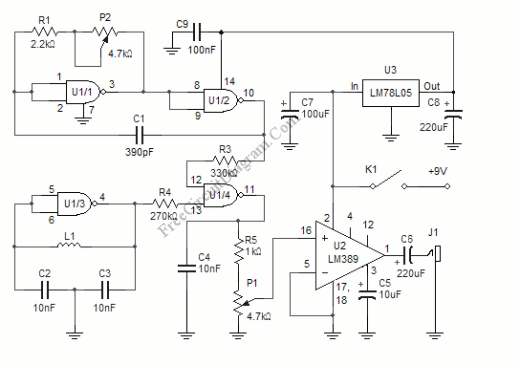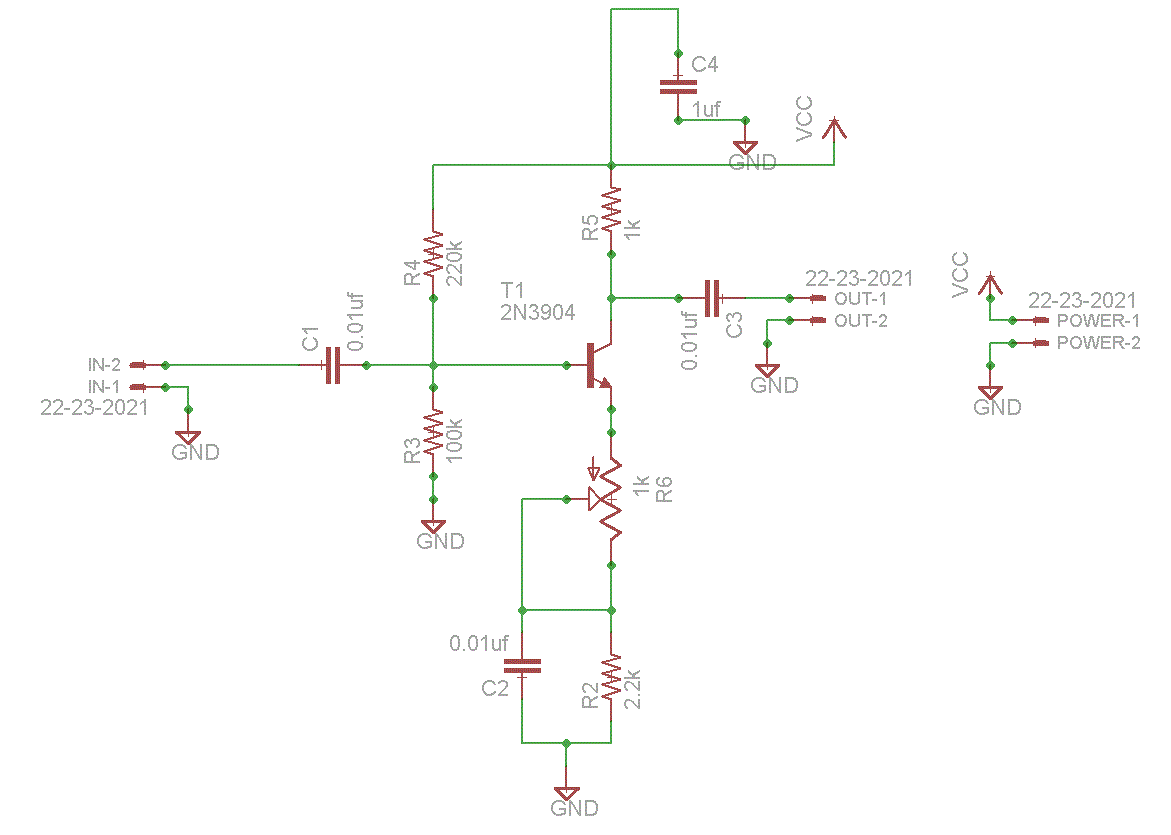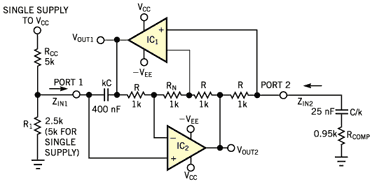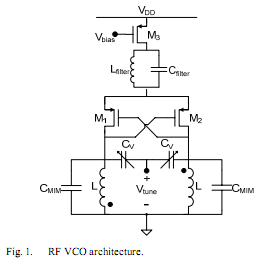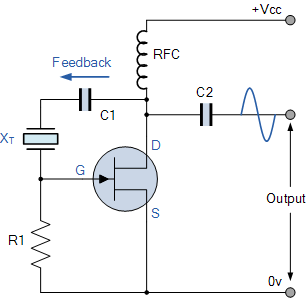
100KHz Crystal Oscillator
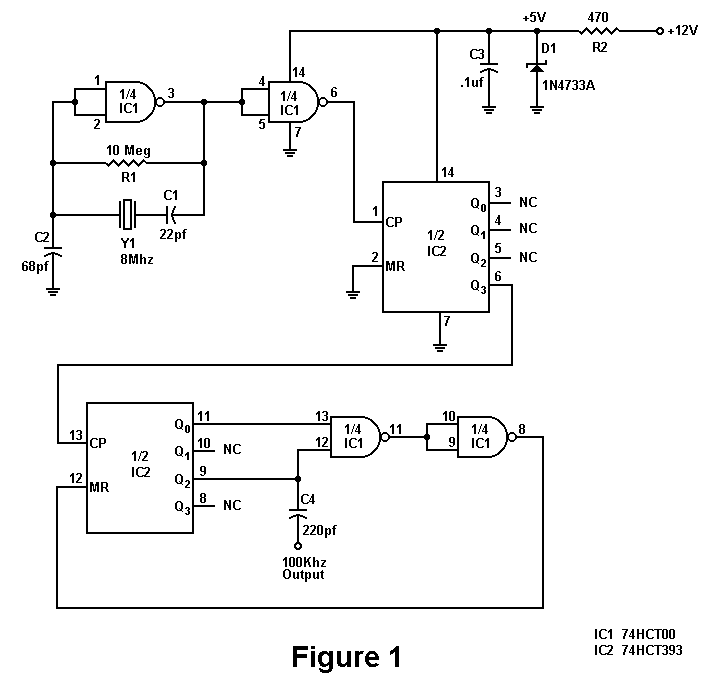
There is a significant amount of vintage amateur equipment that many enthusiasts have chosen to restore and rejuvenate. Although many early amateur transceivers operate effectively, they typically lack a digital readout and depend on analog dials for tuning. The challenge of dial calibration is further complicated by the non-linear characteristics of tuning capacitors. This month's circuit features a 100 kHz crystal calibrator utilizing an affordable microprocessor crystal and CMOS integrated circuits that are commonly available at electronic supply stores. The primary issue with constructing a 100 kHz oscillator is the scarcity of 100 kHz crystals. Even if a supplier is found who can provide such a crystal, the cost is typically $20 or more, excluding shipping fees. The circuit employs a low-cost 8 MHz microprocessor crystal, which can be easily sourced from most electronic component distributors. By utilizing a 74HCT393 binary counter integrated circuit, the 8 MHz signal from the crystal can be effectively divided down to 100 kHz or nearly any desired frequency.
The design of the 100 kHz crystal calibrator circuit involves several key components and design considerations. The heart of the circuit is the 8 MHz microprocessor crystal, which serves as the frequency reference. This crystal is connected to the input of the 74HCT393 binary counter IC, which functions as a frequency divider. The 74HCT393 is a dual 4-bit binary counter that can divide the input frequency by a factor determined by the binary settings of its control pins.
To achieve the desired output frequency of 100 kHz, the 8 MHz signal from the crystal is fed into the first stage of the counter. The counter divides the input frequency by 80, which is accomplished by configuring the counter to count up to 80 before resetting. The output of the counter can then be connected to a digital display or used to drive other tuning circuits, providing a clear and precise frequency reference for the amateur transceiver.
Additional components may include bypass capacitors to stabilize the power supply to the ICs, as well as resistors and capacitors for setting the timing characteristics of the circuit. The layout of the circuit should minimize the length of the connections between components to reduce noise and ensure reliable operation. Proper grounding techniques should also be employed to prevent interference and improve the overall performance of the calibrator.
In summary, this 100 kHz crystal calibrator circuit provides a practical solution for amateur radio enthusiasts looking to modernize their vintage equipment. By leveraging readily available components, the circuit offers an effective means of achieving precise frequency calibration, enhancing the usability of older transceivers that rely on analog dials.There is a great deal of old amateur gear which many amateurs have decided to restore and bring back to life. While much of the early amateur transceivers work just fine they usually lack a digital readout and must rely on analog dials for tuning.
The problem of dial calibration is complicated by the non-linear effects of tuning capacitors. This month`s circuit is a 100Khz crystal calibrator using an inexpensive microprocessor crystal and CMOS IC`s which are readily available at Radio Shack. The main problem with building a 100Khz oscillator is the unavailability of 100Khz crystals. Even if you find a vendor willing to cut such a crystal for you, plan on paying $20 or more not including shipping charges.
The circuit uses an inexpensive 8MHz microprocessor crystal which can be easily obtained from most parts suppliers. Using a 74HCT393 binary counter IC, we can easily divide down the 8 MHz signal from our crystal into 100Khz or almost any frequency we need.
. 🔗 External reference
The design of the 100 kHz crystal calibrator circuit involves several key components and design considerations. The heart of the circuit is the 8 MHz microprocessor crystal, which serves as the frequency reference. This crystal is connected to the input of the 74HCT393 binary counter IC, which functions as a frequency divider. The 74HCT393 is a dual 4-bit binary counter that can divide the input frequency by a factor determined by the binary settings of its control pins.
To achieve the desired output frequency of 100 kHz, the 8 MHz signal from the crystal is fed into the first stage of the counter. The counter divides the input frequency by 80, which is accomplished by configuring the counter to count up to 80 before resetting. The output of the counter can then be connected to a digital display or used to drive other tuning circuits, providing a clear and precise frequency reference for the amateur transceiver.
Additional components may include bypass capacitors to stabilize the power supply to the ICs, as well as resistors and capacitors for setting the timing characteristics of the circuit. The layout of the circuit should minimize the length of the connections between components to reduce noise and ensure reliable operation. Proper grounding techniques should also be employed to prevent interference and improve the overall performance of the calibrator.
In summary, this 100 kHz crystal calibrator circuit provides a practical solution for amateur radio enthusiasts looking to modernize their vintage equipment. By leveraging readily available components, the circuit offers an effective means of achieving precise frequency calibration, enhancing the usability of older transceivers that rely on analog dials.There is a great deal of old amateur gear which many amateurs have decided to restore and bring back to life. While much of the early amateur transceivers work just fine they usually lack a digital readout and must rely on analog dials for tuning.
The problem of dial calibration is complicated by the non-linear effects of tuning capacitors. This month`s circuit is a 100Khz crystal calibrator using an inexpensive microprocessor crystal and CMOS IC`s which are readily available at Radio Shack. The main problem with building a 100Khz oscillator is the unavailability of 100Khz crystals. Even if you find a vendor willing to cut such a crystal for you, plan on paying $20 or more not including shipping charges.
The circuit uses an inexpensive 8MHz microprocessor crystal which can be easily obtained from most parts suppliers. Using a 74HCT393 binary counter IC, we can easily divide down the 8 MHz signal from our crystal into 100Khz or almost any frequency we need.
. 🔗 External reference
Warning: include(partials/cookie-banner.php): Failed to open stream: Permission denied in /var/www/html/nextgr/view-circuit.php on line 713
Warning: include(): Failed opening 'partials/cookie-banner.php' for inclusion (include_path='.:/usr/share/php') in /var/www/html/nextgr/view-circuit.php on line 713

